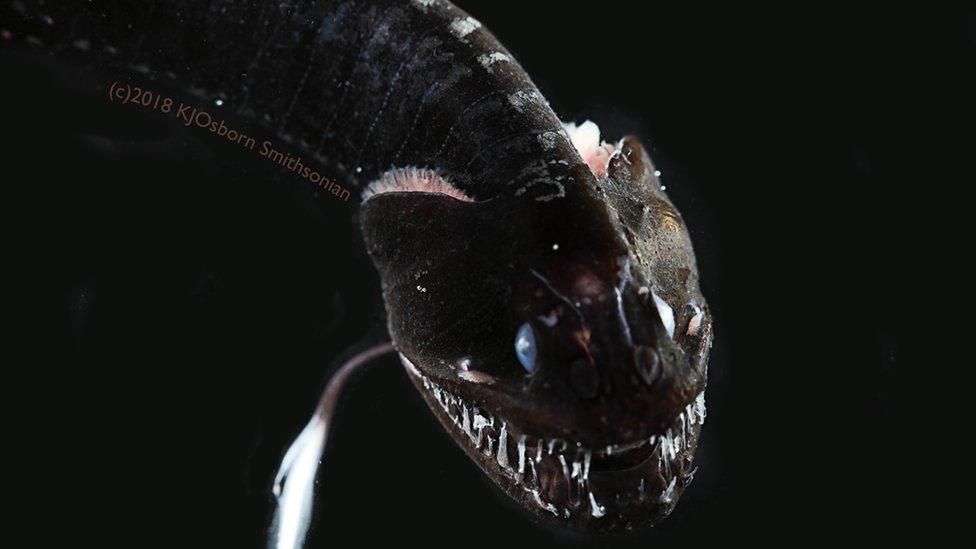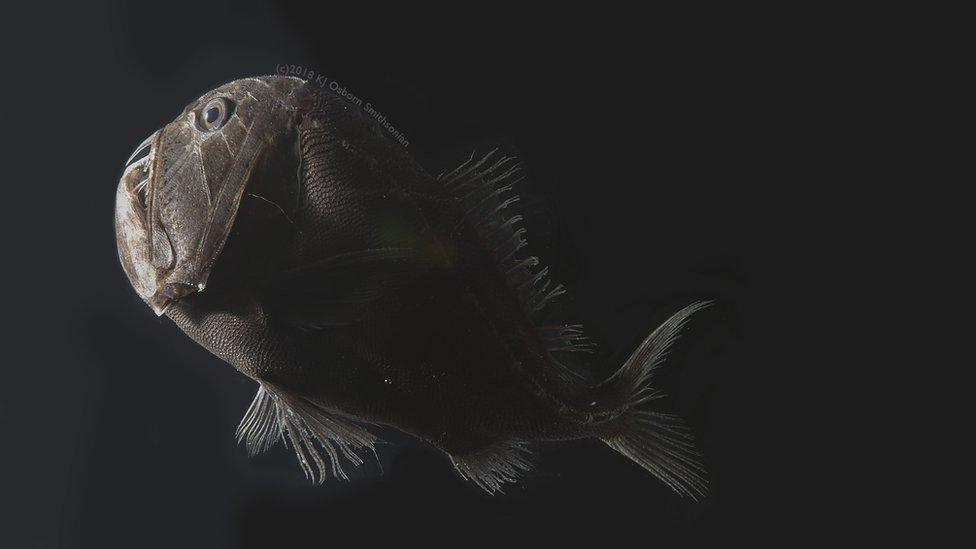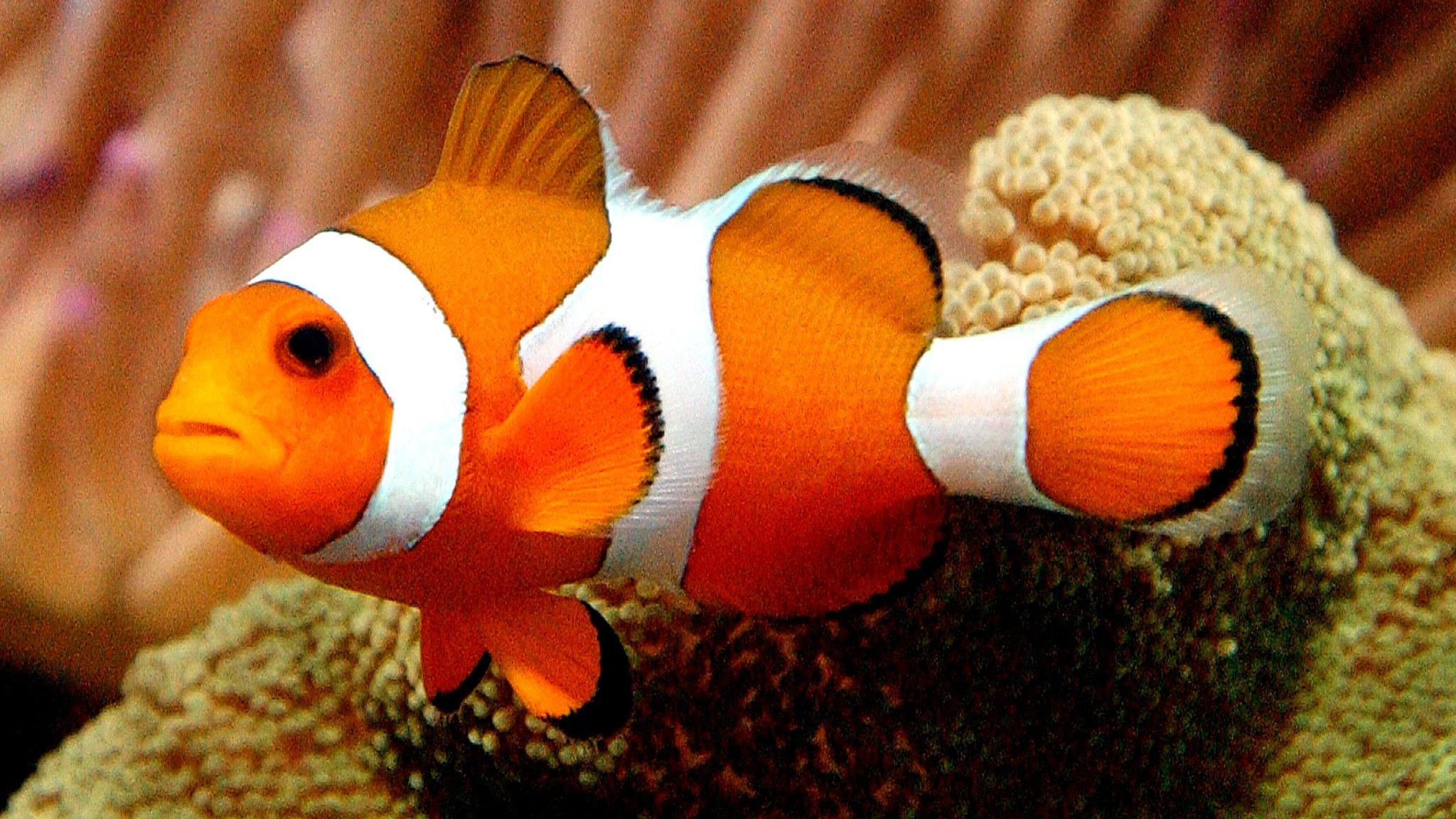Meet the fish helping humans develop camouflage tech
- Published
- comments

Scientists have been studying the skin of deep sea fish which live at the bottom of the ocean.
The fish have ultra-black skin which absorbs more than 99.5% of light.
It is because they have a layer of special cells close to the skin's surface which trap light and bounce it back to be absorbed.
The scientists hope that the discovery could lead to advancements in camouflage technology in the future.
Special skin
The discovery was made by a scientist called Karen Osborn from Smithsonian's National Museum of Natural History, in the US.
She tried to photograph some black fish she and her colleagues had caught in trawl nets used to sample the deep sea.
However, despite having the latest camera equipment, she could not capture any detail in the images.
"It didn't matter how you set up the camera or lighting—they just sucked up all the light," she said.

Dark waters
Having ultra-black skin is really useful in the dark waters of the deep ocean, where no sunlight reaches.
Although it is very dark there is some light from animals which produce their own glow called bioluminescence,
The skin of these ultra-black fish were found to have lots of melanin in (the same thing that protects human skin from sunlight) arranged in a special formation to bounce any light rays back on to itself.
This has the effect of making the light shone on to them disappear on to itself.
"Effectively what they've done is make a super-efficient, super-thin light trap," Osborn said. "Light doesn't bounce back; light doesn't go through. It just goes into this layer, and it's gone."
Part of the reason why these fish have ultra-black skin is so they can hide from predators.
"If you want to blend in with the infinite blackness of your surroundings, sucking up every photon [of light] that hits you is a great way to go," Osborn said.
Future technology
Scientists already know about ultra-black as some birds and butterflies already use it but technology to recreate it at the moment is expensive and the end result is fragile.
Scientists involved in this research say that the discovery of the way the skin redirects the light could help engineers in the development of future technology, for use in cameras and telescopes and for camouflage.
- Published2 July 2018

- Published30 April 2020

- Published8 June 2022

